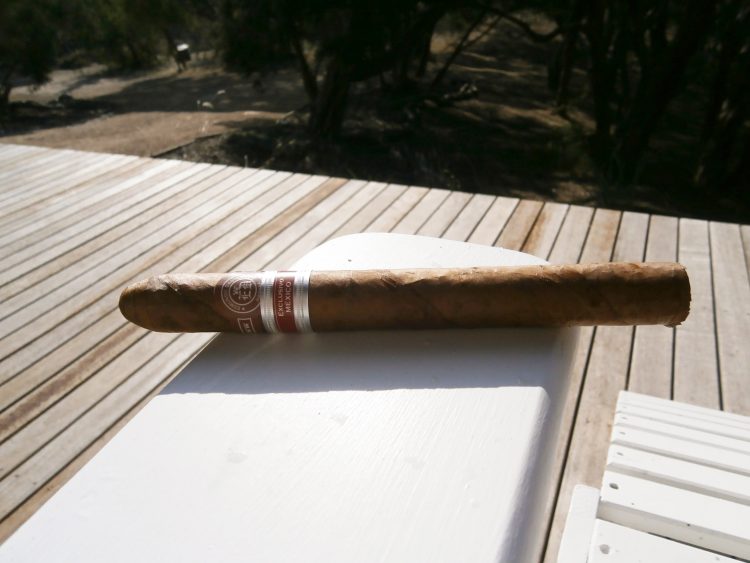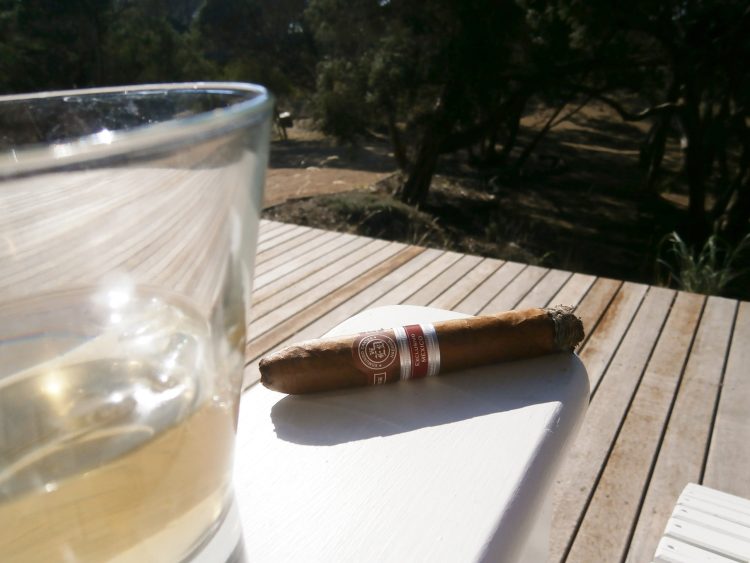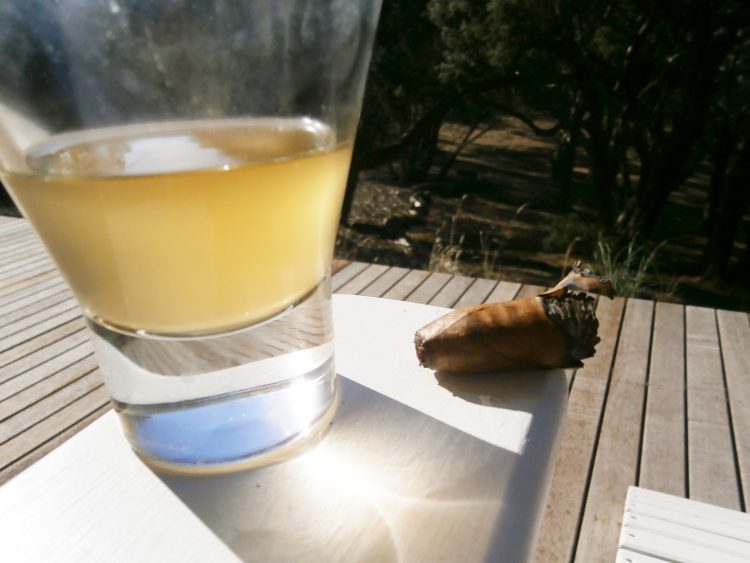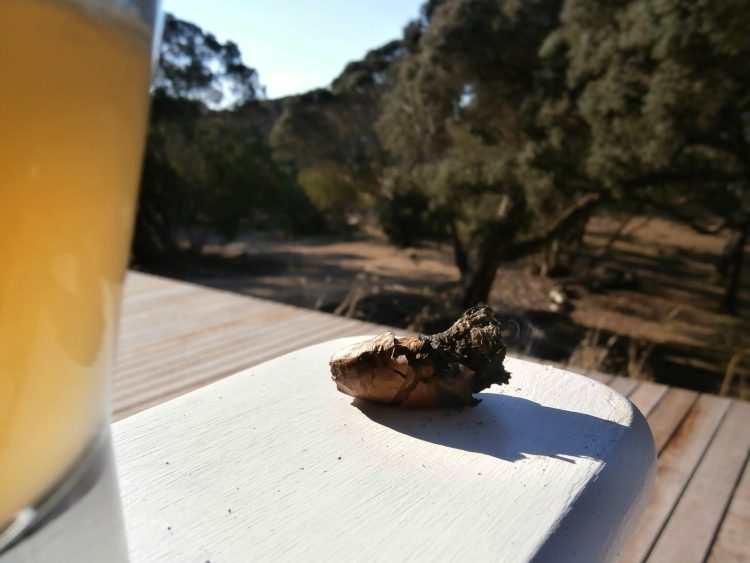Mid-May, readers, and I’m exactly where I was four months ago: the Groom compound, shirtless with a dark and stormy. What a summer! (For the foreigners, shirtlessness in Melbourne typically ends in March, or at the absolute latest, with Daylight Savings in April). Today I’m smoking an Edmundo Dantes el Conde 109, a cigar regular readers may recall from earlier in the season. That one was an unbanded single, an Edmundo Dantes only in my mind; this is the real deal. Will my hypothesis hold up?
The opening photo from that issue showed the Dantes on a table, wet and glistening in the sun. Nobody enquired as to why my cigar might be wet, but nonetheless I’m about to tell you: my name is A. T. Groom, and I am a rinser.
The rinsing technique did the rounds of the cigar aficionado community a few years ago, and we divided pretty firmly along the lines of ‘people who’ve tried it and sort of believe in it’ and ‘people who thought it was a joke.’ I’m not sure who started it, but it got a big boost when Min Ron Nee, the author of the definitive work of Cuban cigar aficionadoism, An Encyclopaedia of Post-Revolution Cuban Cigars, came down firmly in favour (so much so that since then it is usually referred to as “Min Ron Nee’s Rinsing Technique”, even though he is plainly not the progenitor) . The technique involves running the cigar head first under a tap for a few moments immediately before lighting. The oils in the wrapper repel most of the water, but that last minute dose of moisture supposedly helps the cigar burn cooler and more evenly throughout. I haven’t been too scientific about it, but I can confidently say that if it doesn’t help it at least does no harm. Well, not much harm: if you handle it roughly while it’s wet the wrappers are a bit prone to tearing, but that’s on you. At any rate, rinsing is fun, and while I don’t do it with every smoke, I do do it when it’s convenient and when I remember. I did it with that cigar, and I did it with this one.
The Dantes begins excellently, low-medium tobacco with a hint of spice and cream. Throughout the first inch the cream grows, and although it never quite reaches the velvety decadence of the possible Dantes 109, it is nonetheless excellent. There is a very strong sweet undertaste that is just delicious. Reminds me of a pavlova, a sweet mess of sugar and cream. And, y’know, fire and tar and whatnot.
Now that I think about it, I nearly discovered the rising technique by accident six or so years ago when I was smoking a Monte 4 in a Jacuzzi and the cigar fell from my lips during a particularly uproarious guffaw. I fished it out immediately and was surprised to discover that the cigar was still lit, and appeared to have suffered no damage from the experience. It had also had enough heat in it to singe my chest hair underwater. I didn’t think to note whether or not the flavour was improved post-dunking, but in retrospect I’m sure that it was.
Into the second half the draw tightens considerably and grows a bit tar flavoured although I’ve no idea how that’s possible. The tightness of a cigar’s draw is a product of its construction: how tight the leaves are rolled together, and how much smoke can pass between them. I don’t see any way that a cigar can grow tighter as it burns – if anything it should grow looser as the tightly bound portions are combusted – and yet this one has. The only solution I can offer is that perhaps only a portion of the cigar is burning, and I am having to puff harder to fan the smaller coal, although upon inspection that does not appear to be the case.
Curious, I take to the business end fairly vigorously with the bottom of the lighter, scraping out a lot of ash and messing the thing right up, but not finding a coal. The leaves are blackened, but not on fire. Is it smouldering? Although smoke still draws, I apply some flame, which improves things a little, although not as much as I’d hope. Perhaps the breeze is bothering it, or perhaps the proximity of the heat caused something lower in the cigar to expand, and tighten the draw.
For a fleeting moment I wonder if perhaps the rinsing technique is the source of my troubles. Surely not. In the final third the cream has gone, and with it much of the sweetness. The flavour at this stage is a broad bitter coffee.
Whatever ever else has resulted, my physical abuse of the nub has removed a good deal of tar from the business inch, and the cigar ends quite lightly, bittersweet, with a murmur of cream and coffee.
This Edmundo Dantes was not nearly as good as the last one, although the flavour profile was similar enough that I’m willing to conclude that they were the same cigar, and chalk the differences up to storage, climate, mood, variation within boxes, how long before rolling the dusky torcedora had washed her hands, what I had for breakfast and so on.
It’s a good cigar: not the classic it can be when it’s on, but nonetheless excellent. Better than a Monte 4 and a great deal else, sitting somewhere at the upper end of the middle echelon.
Edmundo Dantes El Conde 109 Edición Regional Mexico 2007 on the Cuban Cigar Website



